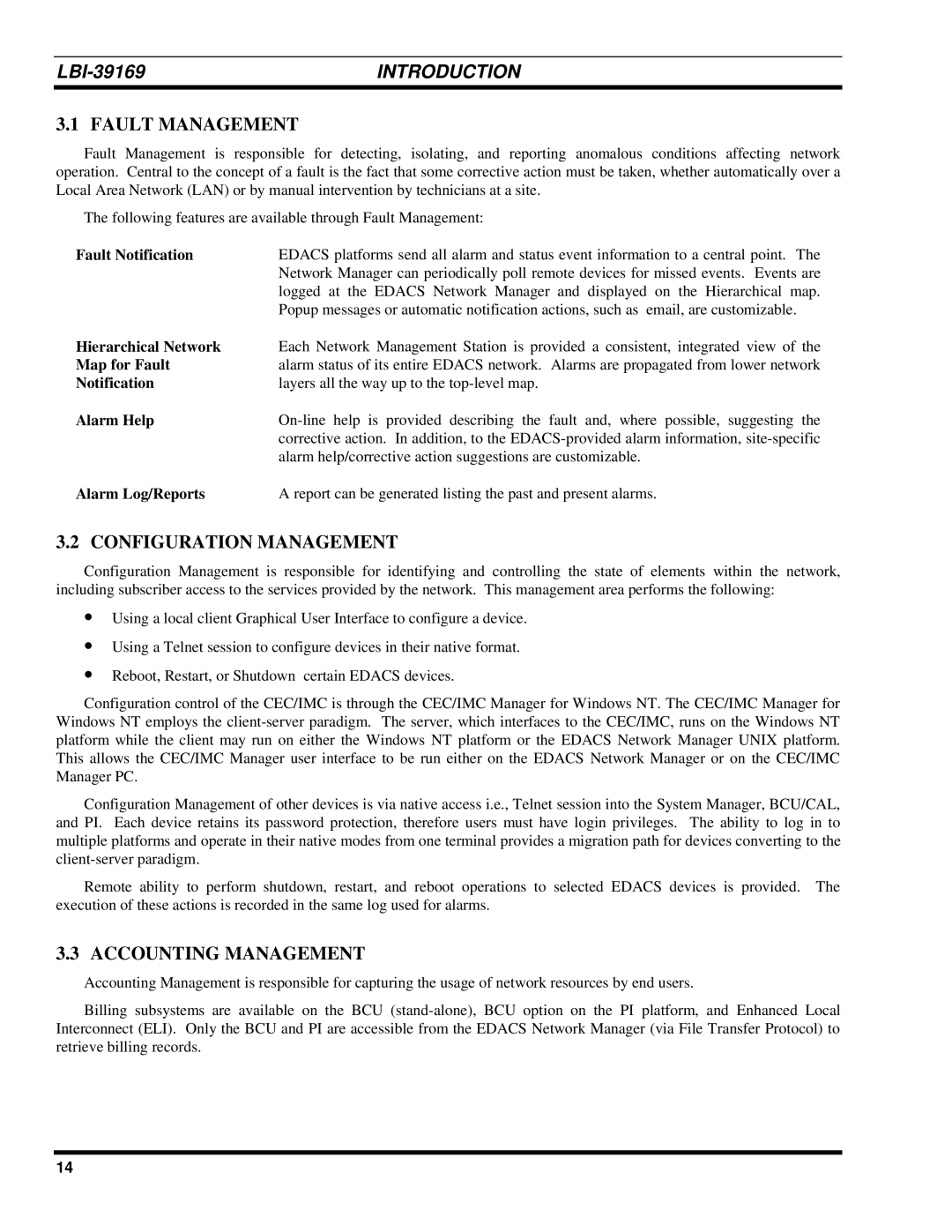
| INTRODUCTION |
3.1 FAULT MANAGEMENT
Fault Management is responsible for detecting, isolating, and reporting anomalous conditions affecting network operation. Central to the concept of a fault is the fact that some corrective action must be taken, whether automatically over a Local Area Network (LAN) or by manual intervention by technicians at a site.
The following features are available through Fault Management:
Fault Notification | EDACS platforms send all alarm and status event information to a central point. The |
| Network Manager can periodically poll remote devices for missed events. Events are |
| logged at the EDACS Network Manager and displayed on the Hierarchical map. |
| Popup messages or automatic notification actions, such as email, are customizable. |
Hierarchical Network | Each Network Management Station is provided a consistent, integrated view of the |
Map for Fault | alarm status of its entire EDACS network. Alarms are propagated from lower network |
Notification | layers all the way up to the |
Alarm Help | |
| corrective action. In addition, to the |
| alarm help/corrective action suggestions are customizable. |
Alarm Log/Reports | A report can be generated listing the past and present alarms. |
3.2 CONFIGURATION MANAGEMENT
Configuration Management is responsible for identifying and controlling the state of elements within the network, including subscriber access to the services provided by the network. This management area performs the following:
∙Using a local client Graphical User Interface to configure a device.
∙Using a Telnet session to configure devices in their native format.
∙Reboot, Restart, or Shutdown certain EDACS devices.
Configuration control of the CEC/IMC is through the CEC/IMC Manager for Windows NT. The CEC/IMC Manager for Windows NT employs the
Configuration Management of other devices is via native access i.e., Telnet session into the System Manager, BCU/CAL, and PI. Each device retains its password protection, therefore users must have login privileges. The ability to log in to multiple platforms and operate in their native modes from one terminal provides a migration path for devices converting to the
Remote ability to perform shutdown, restart, and reboot operations to selected EDACS devices is provided. The execution of these actions is recorded in the same log used for alarms.
3.3 ACCOUNTING MANAGEMENT
Accounting Management is responsible for capturing the usage of network resources by end users.
Billing subsystems are available on the BCU
14
